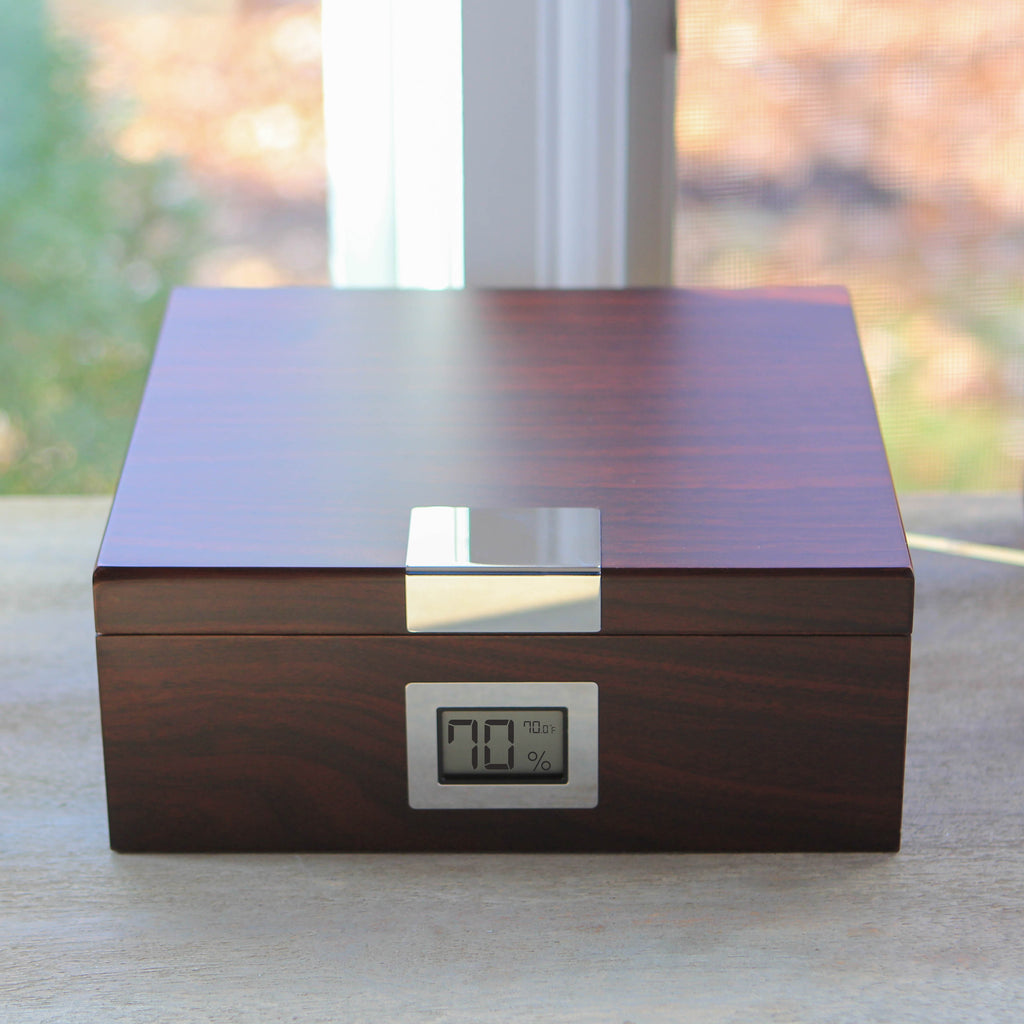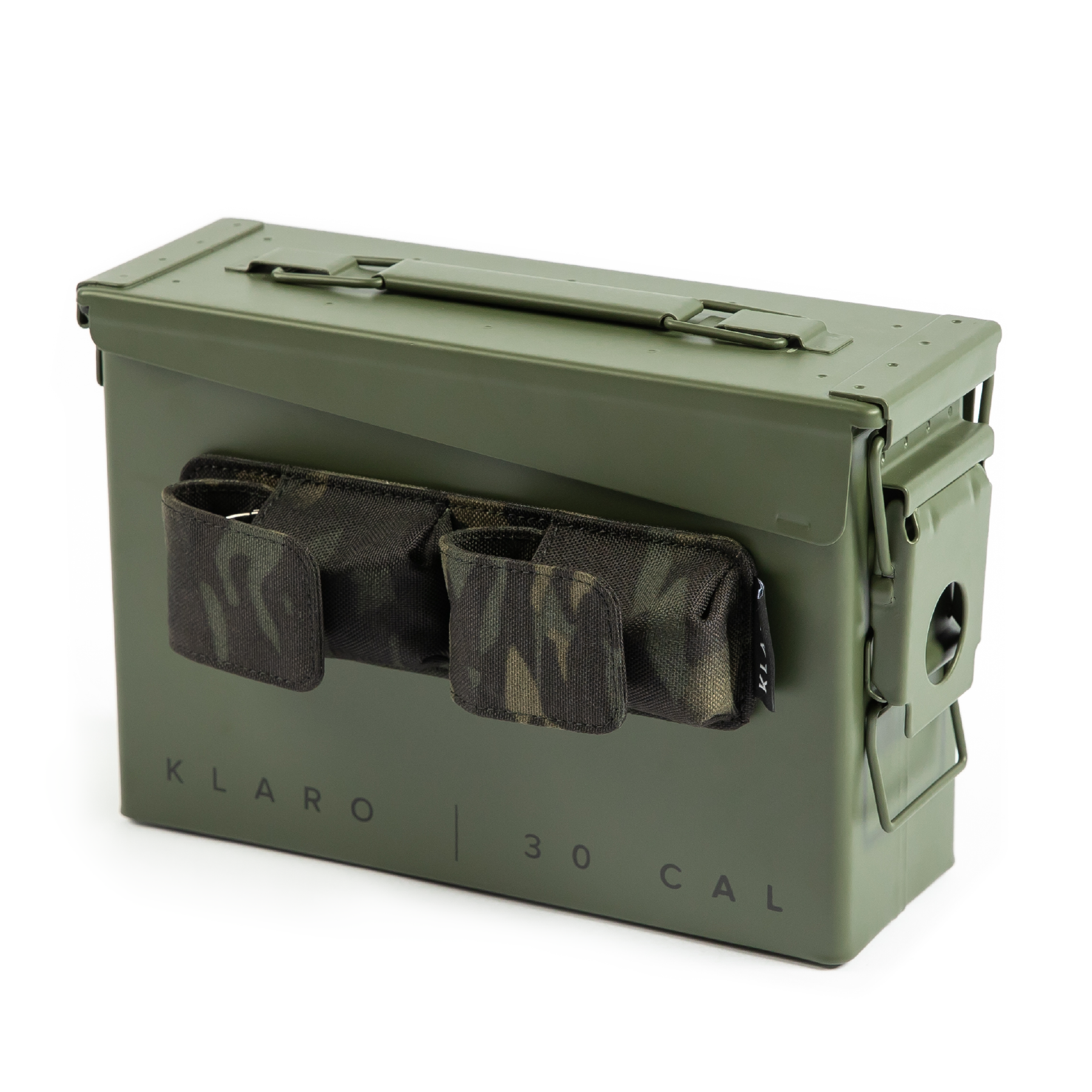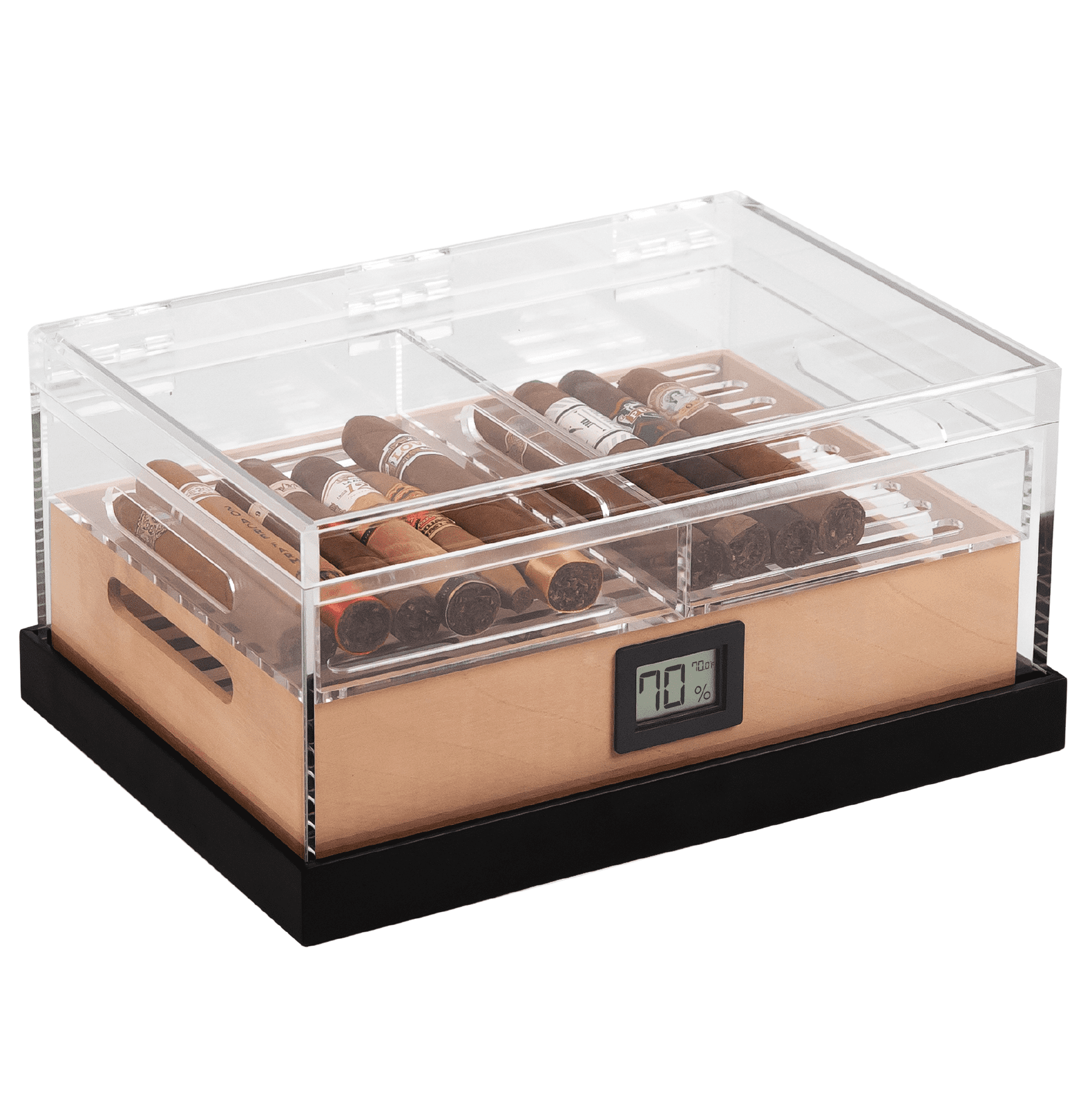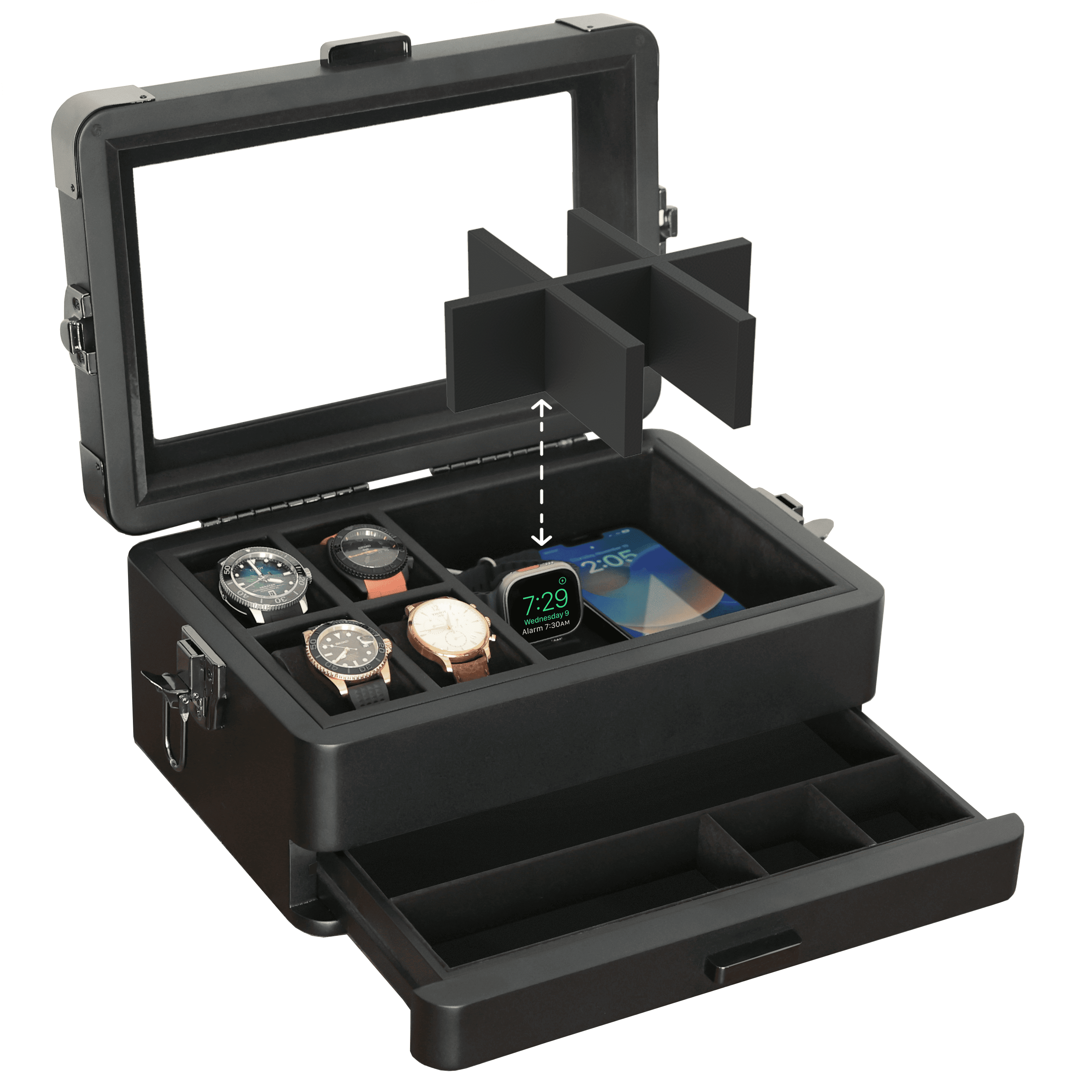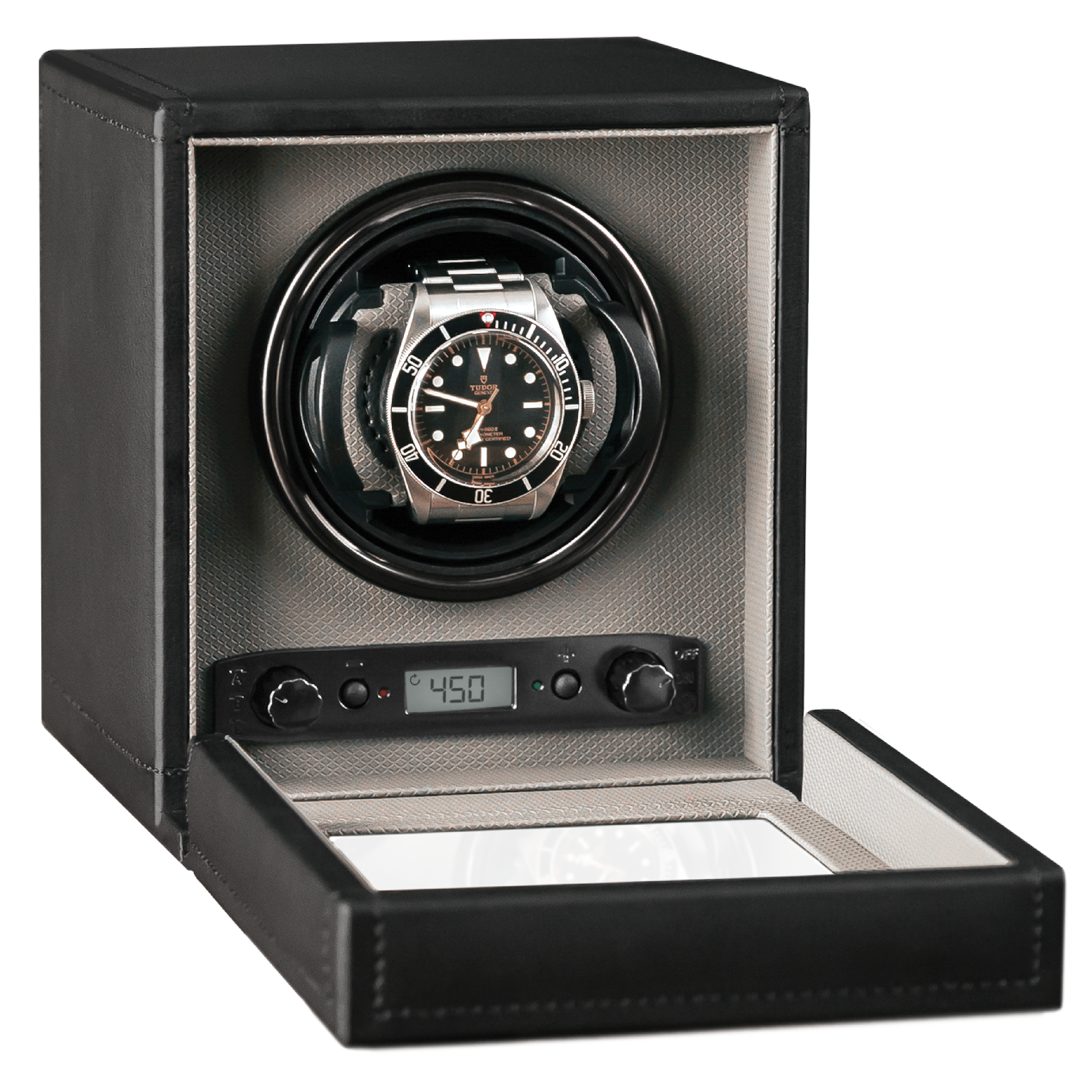- Cigars smoke better when stored in the right environment.
- Humidors regulate humidity to protect your cigars and maintain their optimal smoking condition.
- Humidor components determine humidor performance–wood type, humidification system, and a seal.
- A quality hygrometer keeps everything in check. You want 65-72% humidity.
- Price ranges are extreme–from $50 to +$50,000. Focus on functionality, not glam.
Humidors are a needed accessory for owning and enjoying cigars. They safeguard your cigar collection and maintain optimal smoking conditions so you experience all the subtleties of your cigars in their finest form.
Cigars require precise storage. They require a goldilocks environment–not too cold, hot, humid, or dry. Sustained exposure to any of these extremes can compromise the flavor and smoking experience. Certain levels of temperature or humidity can actually damage tobacco, even. A cigar will dry out, crack, tunnel or canoe when smoking, or, worse, develop mold.
So what makes humidors the magical storing sweet spot for cigars? And what makes a quality humidor? Your education begins here, and afterwards you’ll know just about everything you need to know about cigar humidors.
What Is a Humidor?

For the uninitiated, a humidor might sound like a simple storage container. Humidors are boxes, cases, or cabinets that store cigars, available in many shapes and sizes, styles and designs. As simple as a compact travel humidor in your suitcase. As extensive as the walk-in rooms at cigar shops.
Regardless of size, what differentiates a humidor from a simple container is the function of key humidor components that work together to create an optimal storing environment for tobacco.
Humidors maintain a specific humidity level ideal for cigar storage. While some feature advanced electric systems that regulate both temperature and humidity, most don’t require such technology. Most humidors maintain the Goldilock zone through the simple components of wood, humidification, and a seal. A reliable hygrometer helps measure the internal humidity levels, so you know how well those individual humidor components are functioning.
Wood
The humidor interior is typically constructed from wood. Acrylic, glass, and metal are also common, but wood is standard–and for good reason. The exterior material varies widely, from wood to carbon fiber, silicon carbide, polyethylene, and more. On the interior, wood is the preferred—specifically Spanish cedar–because of its ability to hold and release moisture into the air.
Humidification
Most humidors include a source of moisture to help regulate the internal humidity–not too dry, not too humid. So the humidor has to release or store moisture as needed. A humidor humidifier does this, and there are many forms: humidor packs, solutions, gels, silica beads, crystals, and electric humidifiers, to name a few.
Seal
Storing cigars is a long game–and humidors need to maintain the right environment indefinitely. To do so, they require a good seal to maintain internal humidity levels. Modern humidor models feature both a thermostat and hygrometer, tools that can indicate if the seal is working properly. We’ll dive further into these devices later.
Between these three components, your humidor has everything it needs to maintain the optimal storing environment for your cigars.
How Do Humidors Work?
A humidor’s primary function is to regulate humidity. Its components work together to respond to changes that occur when the humidor is opened, cigars are added or removed, or humidity drops or raises beyond recommended levels.
Let’s take another look at the basic humidor components to understand exactly how they function together to maintain that humidity level. How does a humidor work? Here are the basics:
Humidor wood acts as a humidity buffer to absorb or release humidity.
The most commonly used wood in humidors is Spanish cedar–and for several reasons.
- Spanish cedar uniquely retains and expels humidity levels well. It does so without warping or cupping, too, so fluctuations in humidity levels won’t cause the humidor to become misshapen.
- Spanish cedar is coveted for its smell, pleasant yet subtle enough to not alter the taste of the cigar.
- Many cigar manufacturers use cedar when packaging and shipping cigars, in part because it detracts tobacco beetles, but also for its humidification properties.
Not all humidors are made solely out of wood. There are exceptions like carbon fiber humidors and other variants, but you’ll notice that they still feature wood on the interior of the humidor due to its ability to retain and expel moisture. To do this, it has to be of adequate thickness.
The humidor’s interior wood inlay must be of significant enough thickness to absorb moisture and impact the humidity levels. Alternately, the wood’s thickness must store significant moisture amounts to release during dry periods. All Klaro humidors come with at least 5mm thick Spanish cedar inlay.
The humidifier releases moisture into the humidor to counteract dry conditions.
A humidification system is the source of the moisture content in your humidor. It’s how the humidor regulates humidity levels internally. Humidors can have active or passive humidifiers.
- Active humidifiers force humidity into the air mechanically.
- Passive humidifiers release humidity into the air naturally.
The simplest humidification systems are little more than wet sponges that release humidity into the air through diffusion and evaporation. This is a passive system. Then there are gel solutions, or crystal gel beads that actually hold hundreds of times their weight in moisture. This moisture is released over a longer period of time.
Klaro humidors use a unique passive humidification system that utilizes both solution and crystals to easily season and maintain humidity levels. This passive system, known as the Hydro System, is highly reliable, low-maintenance, and responds well to changes in your humidor.
Electric humidifiers are active systems routinely found in large humidors like cabinets and full-size room humidors. They forcefully manage humidity in the humidor by turning on and off when the hygrometer reads below or above its programmed level.
Different woods retain and expel humidity at different rates, so a humidor with the right type of wood and the right amounts of that wood will regulate humidity better than ones that are made of other materials.
The hygrometer measures and displays the interior humidity of your humidor.
So how do you know what humidity and temperature levels your humidor holds? That’s where the hygrometer and thermostat come in.
- The hygrometer measures the humidity levels inside the humidor.
- The thermostat measures the temperature.
Odds are you’re familiar with the latter, but the former could be a new item for those new to cigars.
Basic humidors often forgo the thermostat. In those cases, simply reference the room’s temperature.
The hygrometer is more necessary. Without it, knowing the humidity level inside your humidor is pretty much impossible. You’ll find analog and digital hygrometer options available on humidors. But be wary: analog hygrometers are renowned for their inaccuracy. And while digital hygrometers are often more accurate, they need to be gasket sealed to get a trustworthy reading. Often digital hygrometers are built into the humidor so you can see them without opening the unit, but if they are exposed to outside air, the reading is nullified. Which is why the gasket seal on a hygrometer is an required feature.
Types of Humidors

Already we've noted some of the different types of humidors on the market. But out of the many individual designs, we can use three main attributes to categorize different types:
- Electric or non-electric
- Size
- Construction
Electric and Non-Electric
Electric humidors utilize an electric humidifier. They are most often used on larger humidifiers and stationary humidifiers. It requires a power source (often a standard outlet) to function. In many cases, electric humidors can also regulate temperature, such as in the case of the frigador.
Sizes
When it comes to sizes of humidors, there are typically four main types used in industrial, commercial, or residential locations. Here’s a quick rundown:
-
Walk-Ins
Walk-in humidors are what you’ll find in cigar stores and clubs, though some cigar aficionados maintain walk-ins at their home. These are often electric. -
Cabinets
Cabinets are standalone pieces of furniture. They typically hold over 1,000 cigars and are a great option for long-term, deep storage. They can be electric, too. -
Boxes and Desktops
These are the most common type of humidor and typically feature a horizontal lid to access the cigars. They’re typical built to accommodate 20 to 150 or so cigars, depending on their size. -
Travel Humidors
The smallest of the bunch. These are portable and can accommodate somewhere between two and 20 cigars.
Construction
When it comes to the construction, the vast majority of humidors include an element of Spanish Cedar on the interior. Other interior woods include African mahogany or American cedar. If they don't contain one of these wood types, proceed with caution...
When it comes to the exterior of the humidor, aesthetic and durability take prominence over moisture responsiveness. Handcrafted humidors incorporate all aspects of high carpentry and sophisticated design.
You’ll also find carbon fiber humidors and other non-wood exterior options available. But you’ll notice that they still feature wood on the interior of the humidor because the wood components are still responsible for retaining and releasing moisture.
When it comes to those speciality humidors that repurpose existing containers–ammo boxes, tupperware, glass jars, even gun cases–those still often require a wood element like cedar strips, a humidifier like humidor packs, and a hygrometer.
How Much Do Humidors Cost?

Humidors can cost anywhere from under $50 to hundreds of thousands of dollars.
At a certain point, those extreme costs go beyond function and features. But, within reason, the rule stands that the bigger and more complex the humidor, the greater the cost. Also, antique or vintage humidors will carry a hefty price tag. As humidors became more popular with affluent customers in the early 1800s and 1900s, more ornate and lavish features appeared in handcrafted designs.
Klaro humidors are designed to offer the highest quality possible. We offer options that start around $34 and go up from there. But regardless of price, we build all Klaro humidors to accurately maintain humidity levels for the cigars inside. Our more expensive humidors are larger, incorporate additional features, and include hardware and materials that affect the cost of manufacturing.
One of these is coveted features is an accessory drawer. Higher-priced boxes and desktops will often feature a humidor accessories drawer, providing you a place that isn’t climate-controlled to store your butane torch lighter, travel case, and more.
Choosing a Humidor
So, which humidor is right for you? The answer certainly isn’t the same for everyone. A variety of factors to consider include your budget, how often you smoke cigars, how many cigars you keep at once, the space in your home you have to put your humidor, and other variables.
Before you buy the first humidor that looks good to you, think about your needs. Ask yourself questions such as the following:
- How often do you partake, and does that differ between seasons?
- How many cigars do you plan to keep at once?
- What’s your budget, or how much do you want to spend?
- Do you live in a climate with extreme temperature or humidity fluctuations?
- Do you want to be able to travel with your humidor?
And if you operate a commercial business and have considered incorporating cigars into your bar, lounge, or restaurant, your choice will depend a lot on the same variables as private owners: projected sales, inventory variety, budget, and space.
Recommended Humidors
The humidors we recommend come from our Klaro line of humidors as we know them well and have spent countless hours in testing and personal use. They offer a premium product at a reasonable cost. Explore what makes each one special.
Military Glass Top Humidor
Built like a tank, the Military Glass Top Humidor is a large humidor made of thick wood with a Spanish cedar inlay. This combination makes it easy to maintain and use. The corners feature polished gunmetal corner guards, the sides offer lid latches, and stenciled, distressed graphics feature under the custom carrying handles.
Resembling a military footlocker, this humidor is built to last and be a featured piece of any room. It also has a drawer that comes with foam pre-cut to fit the Gunmetal Accessory Kit. This foam is removable if you’d rather not purchase the kit. If you’re looking for a humidor to keep 50 to 100 cigars, this is a fantastic option.
Octodor Glass Top Humidor
Built to be the epitome of luxury in the Klaro lineup, the Octodor has a striking octagon silhouette. It offers customers a posh black piano finish, glass top, front digital hygrometer, accessory storage drawer, Spanish cedar, magnetic enclosure, and the patent-pending Hydro System.
The Octodor also features a cedar tray inside to provide some separation. Low down on the unit is an accessories drawer specifically designed for Case Elegance’s humidor accessories. The Octodor holds up to 100 cigars and is a fantastic option for just about anyone who enjoys Cigars.
Renzo Glass Top Humidor

The Renzo Glass Top Humidor is another fine, premium offering. It features a beautiful walnut gloss finish, wood construction, glass top, and a Spanish Cedar interior that will work perfectly to keep your cigars at optimal humidity.
If you need a place for your humidor accessories, the Renzo has you covered as well with a handy drawer lower down underneath the humidifying space. This particular option is perfect for somewhere between 50 and 70 cigars, depending on the size of those cigars.
Mill Glass Top Humidor
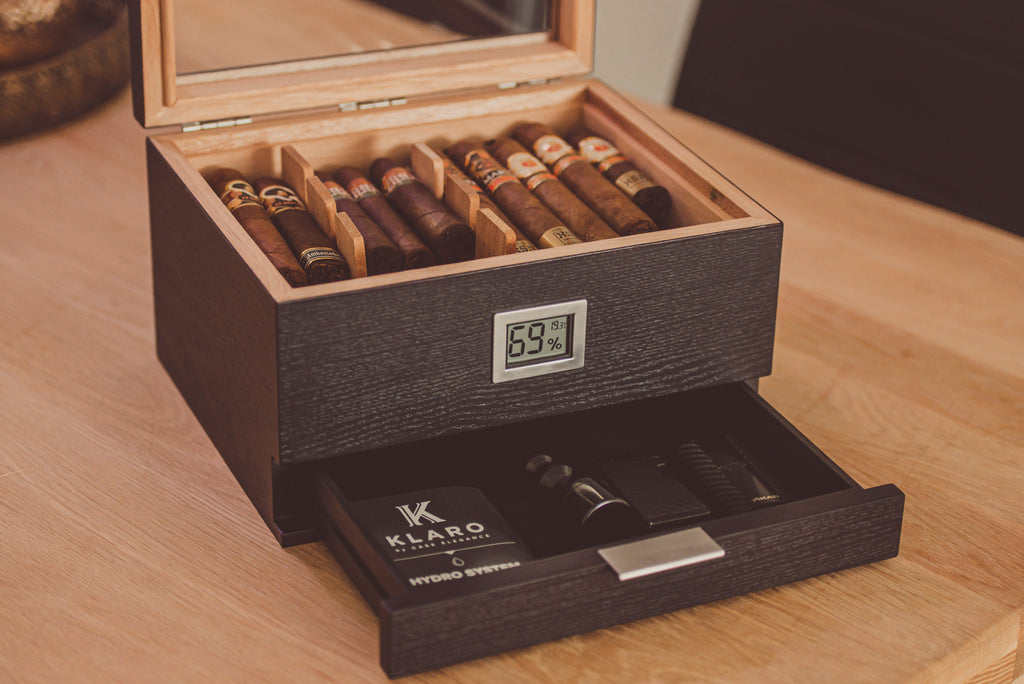
The Mill Glass Top Humidor features much of the same design as the Renzo. However, it differs in its appearance and is actually larger than the Renzo, making it an attractive option for cigar aficionados who want a little higher capacity.
The finish is a light satin grey, and the hardware is all metal. Of course, Spanish Cedar adorns the interior and there’s a drawer for your humidor accessories. The Mill Glass Top offers a maximum capacity for between 60 and 90 cigars depending on their size.
KOBI Glass Top Humidor

The KOBI humidor features a unique slatted wood paneling design that allows for a quite disguised accessory drawer at the base of the unit that easily disappears into the outer walls of the humidor upon closing. Also interesting is the convenient placement of the hygrometer on the inside of the humidor.
Inside the KOBI a 5mm thick Spanish cedar inlay helps maintain exact humidity levels for your cigars. The KOBI can accommodate between 50 to 80 cigars depending on their size and arrangement within the box.
Kingston Carbon Fiber Humidor
If a wood finish on the exterior of the box isn’t for you and you want something more modern, then look no further than the Kingston Carbon Fiber Humidor. This product offers a wood construction with a matte carbon fiber finish, giving you an all-around unique look.
The interior is fully lined with Spanish Cedar, so that your cigars will have no issue staying fresh, and there’s a digital hygrometer on the exterior of the box, so you can see the status of the humidity without opening it. The Kingston is good for up to 68 cigars depending on their size.
Kingston Cherry Finish Humidor
If you like the sound of the Kingston humidor, but want a classic wood finish, then the Kingston Cherry Finish Humidor is the one for you. This product features, the same design and construction as the Kingston Carbon Fiber, but it offers a deep and beautiful cherry finish on the exterior.
Inside you’ll find the same Spanish Cedar to keep your cigars fresh, and the digital hygrometer on the outside of the humidor will show you the status of the interior without you having to open it. Again, the Kingston has enough capacity for up to 68 cigars depending on their size.
Desktop Digital Cherry Humidor
If you’re just an occasional cigar smoker, and you don’t feel the need to have dozens of cigars on hand at all times, then something simple like this Desktop Digital Cherry Humidor will do the trick.
Made of real Spanish Cedar and featuring a deep Cherry finish, this box offers the essentials for humidifying your cigars. You get a digital hygrometer and a humidification system. You can store up to 25 cigars within this humidor, and that’s plenty for the casual cigar aficionado.
Desktop Analog Cherry Humidor
Going digital is great, but if you want to kick it old school, or you just don’t feel the need for a simple humidor to have a digital hygrometer, then the Desktop Analog Cherry Humidor is for you. Instead of having a digital hygrometer, you get a classic analog one. It does the job well.
Other than the hygrometer, this box is no different than the one discussed above. It still features the top-notch Spanish Cedar construction and a beautiful cherry finish. Again, this humidor is good for up to 25 cigars.
How to Use Your Humidor
Exactly how you use your humidor will vary from product to product. The manufacturer of the humidor should provide you with instructions on how to season and use your humidor. The process should never be that complicated.
The idea is to provide you with a smart way of storing your cigars for later use, not make it difficult for you to keep them nice. That said, some will require more work than others. Generally, you’ll use your humidor like this, you season the humidor, place your cigars inside, and then monitor the temperature and humidity levels so that your cigars stay nice.
Seasoning Your Humidor
Seasoning your humidor sounds more complicated than it really is. It's less labor-intensive than you might imagine, too. For a standard wood humidor with a standard humidification system, it simply requires time and adjustment.
The concept is simple: utilize the Klaro Tray on Klaro humidors as recommended depending on your model to achieve your desired humidity levels prior to storing cigars in your humidor. The Hydro Tray incorporates the use of our own humidor solution and gel crystals to regulate the humidity levels. In general, you're aiming for 65%-72% relative humidity.
As with all things, humidity tends to leave the humidor little by little; so you will have to do a maintenance every now and then. Also, depending on the season and your local climate, you may have to season it a little harder. Another thing to mind is the temperature. You must try to keep the humidor as close to a comfortable 70°F (20°C) as possible. Your humidor doesn't regulate its own temperature (unless you have a Fridgador).

The latest Klaro Humidors come fitted with the HYDRO SYSTEM, which humidifies the cedar with the liquid humidor solution directly from the bottom up. It comes with a custom-sized hydro tray, humidity-holding gel beads, and two types of custom formulated humidor solutions. You'll need to replenish it eventually, so we recommend subscribing to our yearly Klaro Membership, which comes with our proprietary mix of regular and Winter/Dry humidor solution that cover all types of climates.
If you're a customer of Case Elegance or Klaro, select your model (here) and let us know if you have any questions through our various customer support channels.







